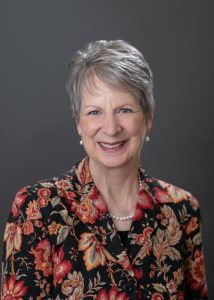 A couple of Saturdays ago, I attended the Women’s Book Club at Bethany Lutheran Church in Waynesboro, Virginia. Only a foursome, but discussion was lively in part because of the book, Annie Dillard’s An American Childhood. I had read Dillard’s essay “Total Eclipse” and excerpts from An American Childhood previously, so it was a treat to have an excuse to read the entire book and spend an hour and a half with a small group of seeking women.
A couple of Saturdays ago, I attended the Women’s Book Club at Bethany Lutheran Church in Waynesboro, Virginia. Only a foursome, but discussion was lively in part because of the book, Annie Dillard’s An American Childhood. I had read Dillard’s essay “Total Eclipse” and excerpts from An American Childhood previously, so it was a treat to have an excuse to read the entire book and spend an hour and a half with a small group of seeking women.
My husband Keith thinks people make location decisions based one of the following: geography, family/friends or mission. ‘I must live where there’s lots of sun, snow, in New England, Texas, near shopping malls or not; I must live near my family and/or friends; I must go wherever my mission takes me.’ Keith and I put mission first in our lives, even though family and geography were important considerations.
Which was important to Annie Dillard? She grew up in suburban Pittsburgh of the 1950’s. Although her father and mother and Annie’s voracious appetite for reading, nature and drawing occupied her musings, the focus of her childhood was geography and of the book, a sense of place.
There were boxed yellow thirties apartment buildings on those Penn Avenue blocks, and the Evergreen Café, and Miss Frick’s house set back behind a wrought-iron fence. There were some side yards of big houses, some side yards of little houses, some streetcar stops, and a drugstore from which I had once tried to heist a five-pound box of chocolates, a Whitman sampler, confusing “sampler” with “free sample.” It was past all this that I ran that late fall afternoon, up old Penn Avenue on the cracking cement sidewalks – past the drugstore and bar, past the old and new apartment buildings and the long dry lawn behind Miss Frick’s fence. (108)Annie’s place was one of growing privilege, never living in coal miners’ or steel workers’ neighborhoods but eventually moving into those of the company executives whose families belonged to the Country Club and whose children attended small, elite private schools. Although I couldn’t imagine Annie Dillard – with freedom to explore her physical surroundings and intellectual curiosity – growing up in any other country in the world, I could imagine many children in the United States of the 1950’s not having An American Childhood like Dillard’s.
Friends and family put up with her more than she put up with them, Dillard readily admitted. Annie’s two younger sisters rarely played roles in her life drama, although her parents exhibited stylistic flares, which Dillard lovingly embraced. But when Annie hit her teens and her style led her to quit church for drag racing, she found herself on crutches in juvenile court, suspended from school for smoking cigarettes and grounded at home.
French teacher Madame Owens, “…a sturdy, affectionate, and humorous woman who had lived through two world wars in Paris by eating rats,” wrote the following to the headmistress about Annie: “‘Here, alas, is a child of the twentieth century.'”
The headmistress sent Annie to Hollins College, her alma mater where she “…sent all her problems… …to smooth off [Annie’s] rough edges,” the headmistress told Dillard’s parents. Yet Annie liked her rough edges – the lens through which she saw the world.
Annie Dillard made it out of childhood into the adult world, but we book club ladies sensed that life was a wild ride wherever she landed.



0 Comments